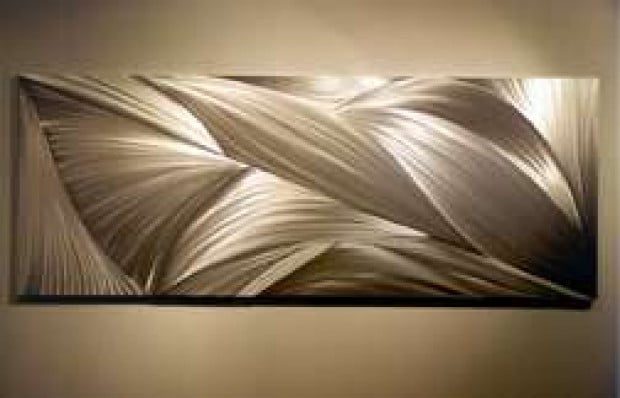Laddie John Dill has been called the “archetypal California artist,” and in a conversation with him, it’s easy to see why.
First off, he is a Malibu native son. He actually folded newspapers for The Malibu Times when he was eight years old and he attended Webster Elementary School. After graduating from Chouinard Art Institute he went on to become a printer with the esteemed L.A. workshop Gemini G.E.L. At Gemini he worked closely with legendary abstract artist Jasper Johns and Bob Rauschenberg, whom he cites as influences.
Dill’s early pieces focused primarily on sand and light, creating what looked like an aerial view of a body of water or mountainous region. He had his first solo exhibition in New York in 1971, and soon after Dill edged toward what would become his own particular style.
His work has been referred to as “beautiful chunks of planet.” Working with earth materials such as sulfur, volcanic ash, blue cobalt oxide, jade oxide and red iron oxide, and incorporating it with silicone and a special cement, he created three-dimensional geological arts forms.
Through the years, his expressionistic sculptures and three-dimensional wall paintings have been exhibited around the world.
Dill says he likes to create using what is “indigenous to certain areas of landscape, so someone looking at [his] work has a literal reference, and hopefully people will be able to connect [with] and have a better understanding of abstract art.”
He spoke about hiking and observing nature and the geography of the canyons, comparing the red rock formations in Solstice Canyon to other canyons. His favorite is Bryce Canyon in Utah. Dill’s work is represented by countless corporate collections and 22 national and international museums. Recently, he has been working with other materials, including aluminum, steel and glass.
His upcoming exhibition, entitled “Light Traps” at the Skidmore Gallery, is a brand new work for Dill, the first one-person exhibition devoted to the artist’s new works in aluminum. The wall hangings, which are welded and polished aluminum, invoke intertwined flowing ribbons of fabric, reflecting light–hence the title of the show. Others look like smooth, wind-blown sand dunes or converging flows of water.
The exhibition opens Saturday and continues to June 17. More information can be obtained by calling the gallery at 456.5070.


